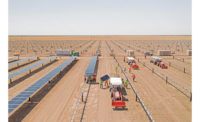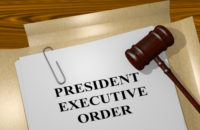As construction responds to soaring global needs and seeks to turn billions in new funding into real solutions, only an expanded and diverse workforce can meet the challenges, say industry leaders. Two key events this month show much progress in AEC sector attention to diversity, equity and inclusion—but still more to do, they note.
More than 5,000 U.S. contractors and affiliate firms have committed to boost workplace culture and diversity awareness and action as part of the third annual Construction Inclusion Week event Oct. 16-20.
The initiative has evolved from sustaining DEI in individual firms to an industry-wide effort focused on training and key action steps to raise and sustain awareness of bias and related issues that affect performance at jobsites and workplaces of individuals at all organizational levels.
Financial support has grown as well for the initiative—a 501(c)6 non-profit—which counts more than 130 industry sponsors, allowing for more investment on resources to deploy throughout the year.
While industry diversity is not a new issue, Mortenson CEO Dan Johnson—who is Inclusion Week co-chair in 2023 and an intiative founder—recalls that its initial event drew nearly 1,000 participants, indicating “there was a thirst in the industry for a program like this.” McCarthy Building Cos. Chairman and CEO Ray Sedey is this year’s co-chair.
Organizers also recognized that no single firm or industry segment could generate the level of change needed, Johnson adds. “It takes everybody—owners, subs, trade partners, designers. Everybody has to learn it.”
Culture, Commitment and Accountability
While the initiative first focused on airing of sensitive and sometimes difficult bias issues, it now provides guidance for training and organization-wide actions to address workplace culture, commitment and accountability, supplier diversity and community engagement. Activities are tailored for both office and jobsite settings.
Organizers also have released this year a DEI Maturity Assessment tool, which now helps employers evaluate and measure success of their diversity and inclusion efforts.
But Inclusion Week also tackles still-longstanding issues that hinder recruitment and retention as the industry labor shortage grows more acute and as jobsite harassment incidents land in news headlines and in complaints to authorities such as the U.S. Equal Employment Opportunity Commission (EEOC).
A report issued earlier this year by the commission found construction still challenged by bias based on sex, race and national origin, with a lack of awareness about how to report incidents and threats of retaliation that it says "hinder efforts to prevent and remedy unlawful discrimination and harassment.”
Johnson says while the industry must be intentional about promoting its career benefits and opportunities, “we know that for some people, it’s not such a great experience.” By further advancing conversations and actions, “we hope to not only attract more people … but also encourage them to stay for the long haul.”
Velma Korbel, chief DEI and sustainability officer at APi Group—an Inclusion Week sponsor—emphasizes that the initiative is not designed as the panacea for all industry diversity and inclusion shortfalls.
“It’s only a week,” says Korbel, formerly Minneapolis Director of Civil Rights. But she emphasizes, until needed change in attitudes and actions “start to be baked into the DNA of organizations, it’s not over.”
Johnson says that while the number of initiative participants is its current barometer of success, organizers plan to monitor other diversity metrics—including how many women and people of color join the industry and move to higher organizational levels.
“We want EEOC to be able to say that construction is an industry to look to for good things,” he says. “We also want to be a role model for other industries to change and get better.”
Aiming for New Perspectives
Design and construction leaders also have joined forces to create AEC Unites, a nonprofit launched on Oct. 3 that aims to expand roles for Black professionals and Black-owned firms that organizers say continue to be underrepresented. The group is focusing on expanded partnerships with historically Black colleges and universities, as well as mentoring and professional development, said Tia Perry, executive director.
AEC Unites was developed by Deryl McKissack, president and CEO of design and construction services firm McKissack & McKissack—granddaughter of a freed slave who established his own construction company—is its co-chair and president. Founding companies also include Turner Construction, Jacobs, Hensel-Phelps, WSP, Gensler, Stantec, Moody Nolan, Clark Construction Group and HOK.
While diversity and inclusion programs exist across the industry to support Black owners and professionals, they are fragmented, said McKissack.
“Now is the time for our industry to evolve,” she says, noting that Black-owned companies “have a hard time getting repeat sustainable business ... and are sometimes hired simply to ‘check a box’ related to project requirements.” McKissack notes need for “the fresh ideas and skills that minority communities can bring to our industry. It's time to focus on changing the status quo.”
Adds Jacobs Chairman Steve Demetriou, who is AEC Unites co-char: “This lack of diversity is preventing the AEC industry from reaching its full potential.”
Turner President and CEO Peter Davoren, also co-chair, adds bluntly: “If you cannot participate in treating people with respect and dignity, eliminating hate and bias and actively caring for people every day … on all our jobsites … there’s no place for you” in construction.
AEC Unites aims to identify and partner with groups to support Black students through K-12 and undergraduate studies in STEM fields to boost the talent pipeline, Perry told ENR. It also seeks to have member firms share efforts they use to make workplaces more inclusive as a baseline for future metrics.
“Advancing diversity, equity and inclusion can be a heavy lift and often require uncomfortable conversations that result in bringing awareness to bias, discrimination and inequality,” she said. But they also “force individuals and organizations to ... gain a deeper understanding of the experiences of marginalized or underrepresented groups.”
While efforts can be well-intentioned, “the true measure of success” is their lasting impact and meaningful change, Perry said. “DEI is a marathon, not a sprint.”
While metrics are important to measure change, “leadership has to be committed and engaged.” she emphasized.






Post a comment to this article
Report Abusive Comment